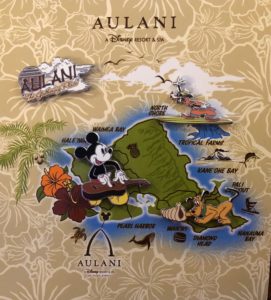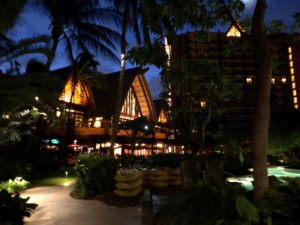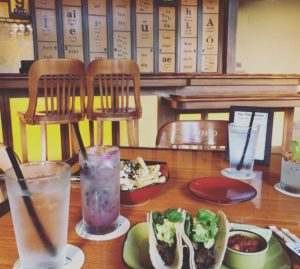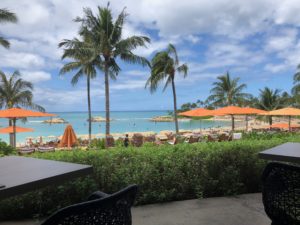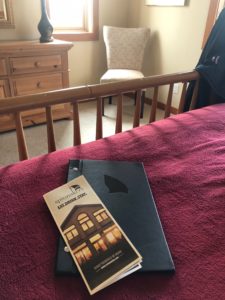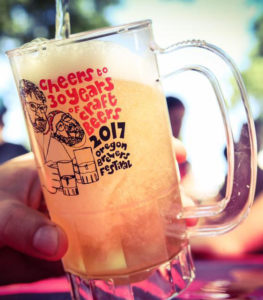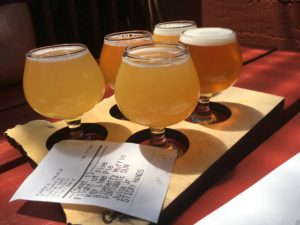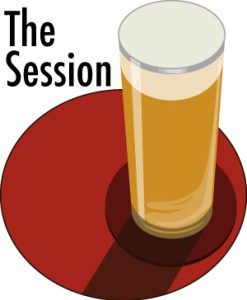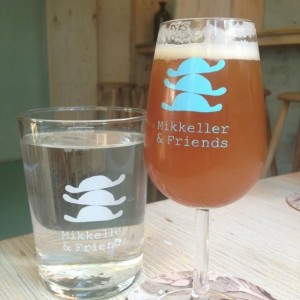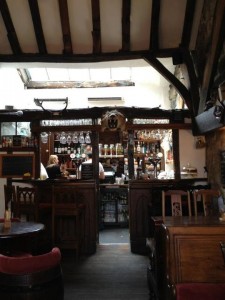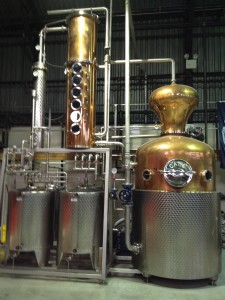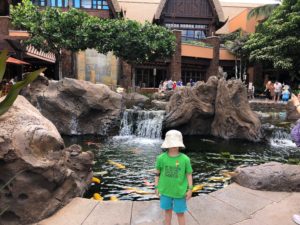 Welcome back to another batch of unsolicited Disney Aulani protips and suggestions. We last reviewed (mostly) food and drink, but today is where we really get into the Disney ‘tribal knowledge’ end of things – knowing When to Line Up and What to Buy.
Welcome back to another batch of unsolicited Disney Aulani protips and suggestions. We last reviewed (mostly) food and drink, but today is where we really get into the Disney ‘tribal knowledge’ end of things – knowing When to Line Up and What to Buy.
Aunty's Beach House
Aunty's Beach House is the kids' club at Aulani; there are freeplay and 'premium' activities for potty-trained kids ages 3-12 – you could, in theory, leave your children there from morning until night for your entire vacation. Although we have Young People at both ends of that spectrum, the larger one skipped any of the structured activities the resort offered, despite the wealth of tween and teen options; our little one, though, fully embraced the Aunty's Beach House lifestyle and did not want to leave. As with many Things Disney, a little tribal knowledge goes a long way; some of these suggestions aren't necessarily spelled out on the website, so it's worth doing a little digging and advance planning:
- Register online before you go - you'll still need to bring your child and your printed form to finish registration, but this will get you in the system; once you arrive, stop by as soon as you can to complete registration - you'll also need to provide a secret codeword to pick them up, so be sure to think of something memorable.
- Call to book premium experiences in advance - they fill up. You'll have another *opportunity* to purchase photos from the event (more on photos in a bit). We did Kakamora Chaos with Moana, and it was a much-loved activity (including facetime and photos with Moana, plus some really quite nice crafts to take home) - we got the last spot by calling about a week in advance, and the other premium activities that week were completely full when we got around to calling.
- If you want Aunty's to serve your child lunch or dinner (for an additional fee), line up outside before they open to make sure they can get a lunch or dinner ticket. We found arriving around 7.40 am was a good time, and our daughter loved the food.
- The open house from 8-9.30 is the only time you can go into Aunty's Beach House with your child (and take your own pictures) - but if you want to make sure they get in immediately when it opens for drop-offs at 9.30, it's worth leaving a little early to go line up (again) to check them in.
- If you want to do an evening dropoff, you may need to get them there in the later afternoon - it was filling up by 3.30-4 pm.
- While you can send your child to Aunty's Beach House in a swimsuit and coverup, they do need to be dry - make it a pre-pool or beach activity, rather than a post-water one, unless you've had them change.
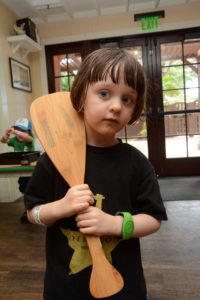 Once you get through the administrivia, Aunty's Beach House is a breeze - your child has a special green bracelet they can use to scan in and out (they can keep it or you can give it back at the end of your stay for a refund, if you kept your receipt), and there is plenty to do. Characters like Stitch come by to dance and play, there are Hawaiian crafts including lei-making, there's a very nice (fenced) outdoor play area and an enchanted living room (there's the occasional 'storm outside,' similar to the Tiki Room at the Disney parks) with child-sized furniture for watching, say, Moana. The Aunty's Beach House staff were excellent - they kept the kids happy and engaged for hours. Our daughter keeps asking to go back, and compares it favorably to her much-loved pre-school.
Once you get through the administrivia, Aunty's Beach House is a breeze - your child has a special green bracelet they can use to scan in and out (they can keep it or you can give it back at the end of your stay for a refund, if you kept your receipt), and there is plenty to do. Characters like Stitch come by to dance and play, there are Hawaiian crafts including lei-making, there's a very nice (fenced) outdoor play area and an enchanted living room (there's the occasional 'storm outside,' similar to the Tiki Room at the Disney parks) with child-sized furniture for watching, say, Moana. The Aunty's Beach House staff were excellent - they kept the kids happy and engaged for hours. Our daughter keeps asking to go back, and compares it favorably to her much-loved pre-school.
Tech Quibbles
If you've been to Disneyland in the past few years, you know that the Disneyland app is incredibly useful - you have a map, ride wait times and character events, plus the ability to book and track dining reservations. The PhotoPass feature in the Disneyland app is also great; it's simple to access your photos and a relatively low-cost add-on. There is no Aulani app, alas; it would be fantastic to make speedy dining, spa and Aunty's Beach House reservations from your phone, but the real miss is the DisneyPhotoPass situation. Your Aulani photos are much, much more expensive than your Disneyland photos, and they are not nearly as easily accessible; you can't get them in the Disneyland app, and on your phone, trying to log in to the DisneyPhotoPass site dumps you in to the Disneyworld login screen; it really only works properly on a desktop computer, so you'll need to save the wristbands you get from the various photographers and add the codes manually once you are back home (unless you are a terrible person who brought a laptop to do work on vacation). You can preview your photos from the TV in your room, or have them added to your account from KÄlepa’s Store, but it's not nearly as seamless (or affordable). It seems like it would be a straightforward add - you'd assume all the Disney photo experiences use the same codebase - but having worked in Big Tech forever, I know that's an unsafe assumption.
Beyond the DisneyPhotoPass pictures, you'll also have other *opportunities* to buy photos - the luau and character dining photographs are also available, albeit for a separate charge, and they arrive via CD(!) - we had to really think whether or not we had a working CD drive before buying them. As always with Disney photographers, the pictures themselves are usually great and very flattering (I suspect that's the real Disney magic), but not having one single digital location (and the additional upcharges) is a bit of a pain. However, there is some pretty interesting metadata on the photos - you can confirm your suspicion that the luau photos of the performers were taken a few years ago, presumably with ideal lighting and weather, and not on the evening you went, but given the team has about an hour to process and make up the photo CDs, it's a reasonable tradeoff.
Additionally, the wifi is not amazing, but you're on vacation, right? Of course, if you are, say, nearly 13 and want to spend your beach and poolside time streaming music and TV (FOR EXAMPLE) this is a bigger issue, but if you don't care about eating through your parents' data plan, you are fine. Just saying.
This being a Disney resort, there are certainly opportunities to take home a bit of the magic, whether that comes in the form of t-shirts, bags, Mickey ears or, of course, Disney pins. (A slight aside for the uninitiated - Disney pins are A Thing, whether you simply buy and collect them or go all-in on pin trading - find out more here). I was actually slightly surprised that there are really only two shops - one with a fairly broad array of merchandise, including essentials like sunscreen, and a higher-end one that focused more on purses and the like. Neither shop is as heavy as they could have gone on Moana items - indeed, while Moana is a prominent character in person at the resort, the range of items for sale is practically restrained by Disney standards. There is a strong focus on the characters that are popular in Japan and China; Gelatoni, Shelliemae and Duffy, all hailing from Tokyo DisneySea, are on offer. I also discovered a secondary Lilo and Stitch character I knew nothing of - one Angel - and now that we are home, we're (naturally) looking to find her in the many and various Lilo and Stitch spinoff properties that seem to exist, since we picked up a not insignificant number of Angel-related items.
One thing has always puzzled me about Disney merchandise - why does Disney not have a dedicated coffee table book division? I would have absolutely made room for an enormous, photograph-heavy hardcover book detailing the design and evolution of Aulani, with a focus on the business decisions, cultural considerations and planning of the resort. I'd equally buy similar books on many of the classic Disneyland attractions - there's an excellent book on the Haunted Mansion, but there could be equally-detailed ones on, say, It's a Small World, the Enchanted Tiki Room, Space Mountain, etc. - there's a wealth of amazing documentation that's is beautifully-arranged in the Walt Disney Archives that would be more accessible (and remuneratively-rewarding) in a fancy book - someone at Disney Publishing should get on this.
But hey, we did get some really nice pins.
Next up: pools, beaches & entertainment
